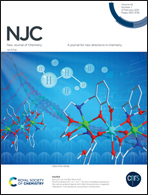Upgrading of diesel engine exhaust waste into onion-like carbon nanoparticles for integrated degradation sensing in nano-biocomposites
Abstract
The valorization of onion-like carbon nanoparticles (OCNPs) from pollutant soot collected from diesel engine exhaust could be a promising and sustainable approach to develop percolated conductive networks in a poly(lactic acid) (PLA) matrix, which could be used for the design of conductive polymer nanocomposite (CPC)-based quantum resistive sensors (QRS). The aim of the present study is to incorporate these waste materials in the field of structural health monitoring (SHM) of biocomposites. Here, OCNPs have been used in the formulation of QRS and further integrated into unidirectional flax fibers and PLA composites for SHM trials without altering their mechanical properties. QRS transducers made of 1 wt% OCNPs dispersed into a PLA matrix have been prepared via an in situ spray layer-by-layer (sLbL) process during the fabrication of flax–PLA composites by film stacking under vacuum conditions. Their in situ sensing of strain and damage was evaluated by submitting the flax–PLA unidirectional composite samples to various incremental and simultaneous loading–unloading cycles. Most importantly, the piezo-resistive behavior of the OCNP-based QRS has been found to be reproducible, and it exhibits large-amplitude signals with a gauge factor of 6 ± 2, which is two to three times larger than that of commercial strain sensors. Additionally, these waste-derived OCNPs possess interesting ferromagnetic properties at room temperature.



 Please wait while we load your content...
Please wait while we load your content...